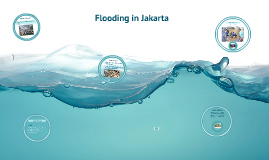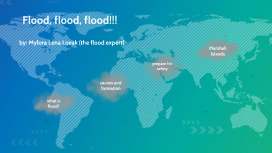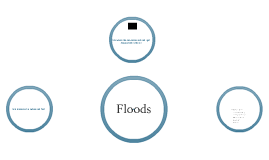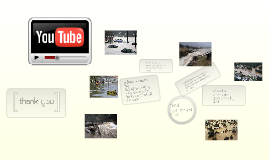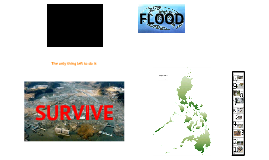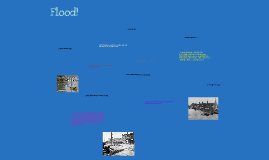FLOOD
Transcript: FLOOD The only thing left to do is SURVIVE _ _ _ _ is usually an overflow of an expanse of water that submerges land and the inflow of tide onto land. Floods are categorized into _A_U_A_ and A_ _I_I_IA_ floods in terms of their specific causes. Flood is basically a natural hydrological phenomenon. Its occurrence is usually the aftermath of meteorological events. These included an intense and prolonged _ai_ _a_ _ spells and unusually high coastal and estuarine waters due to _ _o_ _ _u_ _e_, seiches, etc. Floods are also caused, indirectly, by seismic activities. Coastal areas are particularly susceptible to flooding due to _ _u_a_i_ (seismic sea waves). Sinking of land due to ea_ _ _ _ua_e_ reduces the elevation of land areas. In the vicinity of lakes and rivers, these areas become flood-prone. Likewise, the uplifting of lake and river beds from seismic causes sometime results in the overflowing of these bodies of water. The water then i_u_ _a_e_ the surrounding and adjacent areas. To a certain extent, flooding is an astronomically influenced phenomena such as _i_ _ _i_e_ coinciding with the occurrence of heavy rainfall frequently cause flooding. Flooding is also believed to be caused by sea-level rise. Sea-level rise is defined as the mean rise in sea level as an effect of thermal e_ _a_ _io_ and melting of i_e _a_ _. Occasionally, floods occur unnaturally. These are usually the result of _u_a_ a_ _i_i_ie_. Such activities include: Blasting - this causes landslides in the slopes of hills and mountains which may result in the unintentional damming of rivers and streams; Construction of temporary dams - this produces an impediment to the flow of a river or stream which then results in an overflow; Failure of hydraulic and other control structures - accidents like the breaking of a dike result in the entry of an enormous quantity of water in a protected area; and Mismanagement of hydraulic structures - control structures like dams which are utilized for various purposes are usually operated according to what is known as an "operation rule" and mismanagement which results in the violation of the rule may necessitate an untimely and sudden release of large amounts of excess water. Types of Flooding _i_a_ Flooding Both sea and river defences may be overtopped or breached by a combination of low pressure weather systems and peak high tides. Storms with high wind speeds cause tall and powerful waves and low pressure fronts cause sea levels to rise above normal levels. High tide levels vary through the lunar and solar cycle and when superimposed upon other tidal variations exceptionally high tides result. _ _u_ia_ Flooding Flooding occurs in the floodplains of rivers when the capacity of water courses is exceeded as a result of rainfall or snow and ice melts within catchment areas further upstream. Blockages of water courses and flood channels or tide locking may also lead to ponding and rising water levels. _ _ou_ _ _a_e_ Flooding Low lying areas sitting over aquifers may periodically flood as ground water levels rise. This type of flooding is often seasonal and therefore can be forecasted with good accuracy. It is often slow in its onset. _ _u_ia_ Flooding Surface water flooding is caused by rainwater run-off from urban and rural land with low absorbency. These circumstances, combined with intense rainfall, can give rise to localised flooding. Flooding from Sewers Flooding from sewers can occur where there are combined storm and foul sewers and their capacity is exceeded due to large amounts of surface water run-off in a short time. Poor cleaning and maintenance can lead to blockages that can also cause local flooding. Flooding from Man Made Infrastructure Canals, reservoirs and other manmade structures can fail causing flooding to areas downstream. Industrial activities, water mains and pumping stations can also give rise to flooding due to failure. Flood Classifications _A_O_ Flooding This causes inundation of large areas, isolating towns and cities. Major disruptions occur to road and rail links. Evacuation of many houses and business premises may be required. In rural areas widespread flooding of farmland is likely. _O_E_A_E Flooding This causes the inundation of low lying areas requiring the removal of stock and/or the evacuation of some houses. Main traffic bridges may be closed by floodwaters. _I_O_ Flooding This causes inconvenience such as closing of minor roads and the submergence of low level bridges and makes the removal of pumps located adjacent to the river necessary. Flood Progression F_A_ H floods often occur in deserts where it rains in one place and the water starts to rush to an area further down stream. G_A_UA_ floods, some floods may take a few days to build up to dangerous levels. How do floods cause damage? There are two main types of damage caused by floods: _ _ai_ water damage. This damage basically soaks everything, sometimes it can dissolve foundations and make the ground unstable and






